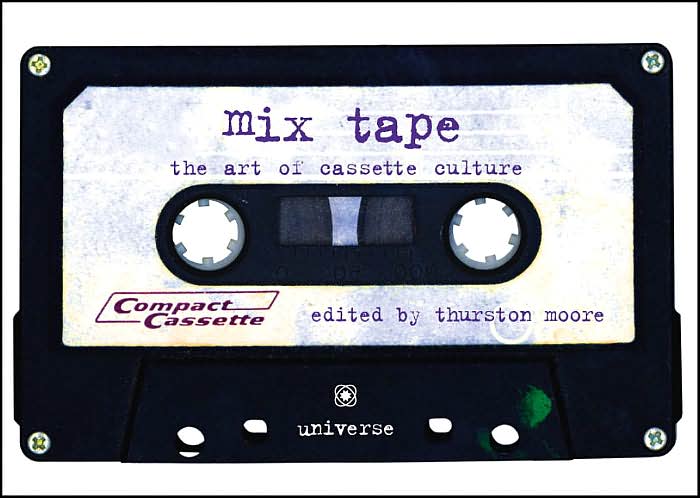It’s likely that at one time or another, all of us have made a mix tape, consciously or unconsciously as an historical document of a specific, important period of our lives. We may have kept the tape in our cassette deck or given it to someone important to us at the time, but the point is that the art of the mix tape is relatively universal. In his latest foray into the publishing world, Sonic Youth frontman and bona fide post-punk icon Thurston Moore underscores that point through the written contributions of some 80 practitioners of DIY taping and artwork that includes photographs and reproductions of the homespun J-cards that accompanied the tapes themselves. The resulting book is time in a bottle—an encapsulation of a cultural phenomenon that will forever transcend the iPod and Internet music sharing.
Deck-to-deck taping takes a lot of thought, a lot of time, and the contributors to Mix Tape represent the elite group of compilers who turned the practice into an art form. It was a way for friends to share music they loved with friends and strangers alike. It was in some way responsible for the rise of underground music—particularly punk rock and, later, what would be dubbed “alternative music.” For that matter, hip-hop enjoyed initial widespread acceptance on the mix tape circuit. The music industry, of course, whined incessantly that home taping was killing music, despite the fact that it actually made a lot of nonradio-friendly music happen. The parallel with today’s P2P controversy is difficult to ignore.
What Moore and his contributors have done with Mix Tape is document a small snippet of lost history, and they’ve done so in superb fashion. The age of eighth-inch magnetic tape may be long gone, but the mark it left on music fans and the bands that truly mattered in the decade or so from the late '70s through much of the '80s is indelible. Here’s to you, dual-deck boom box guy!









